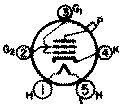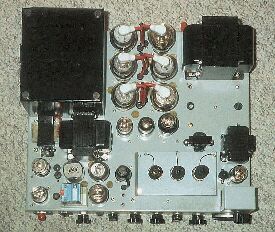Certainly they were the first choice for any sort of power application, radio or audio, for many years.
Rows of 807's were the mainstay of transmitters and modulators during and after WW2 and were common in PA amplifiers. A number of homebrewer used these in guitar amps but by the mid 1970's they were being used as targets in a shooting gallery at the Geelong (Melbourne) Hamfest.

Maximum ratings:
Plate diss. 30W
Plate voltage 750V
Screen diss. 3.5W
Screen voltage 300V
Full power freq 60MHz
Heater voltage 6.3VAC
Heater current 0.9A
Cin 12pF
Cgp 0.2pF
Cout 7pF
Class AB2 push-pull:
Plate voltage 750V
Screen voltage 300V
G1 voltage -32V
Plate current 60/240mA
Screen current 5/10mA
G1-to-G1 drive 92Vpk
Drive power 0.2W
RL p-p 6.95k
Power out 120W
The three circuits shown below appear to be from Ferguson Transformers as it was not uncommon for transformer manufacturers to supply designs that used their components.
These designs differ from later practice by using a driver transformer rather than a phase-splitter stage. Naturally two transformers in the signal path produced limited bandwidth, extra weight, and expense.
One important point not shown in these circuits was the need for 'stopper' resistors hard on each anode (47 ohm) and control grid (1k) terminal to prevent radio frequency oscillation which these were particularly prone to.


